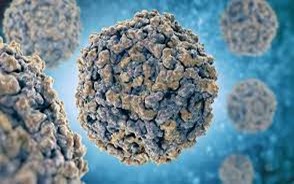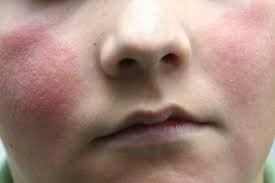Please click the frequently asked questions below for further information and IPC precautions required:
-
What is Parvovirus?
Parvovirus B19 (also known as erythrovirus B19) belongs to the Parvoviridae family of viruses. It causes a common childhood illness called erythema infectiosum or fifth disease.
Parvovirus B19 infection generally results in a mild febrile illness, but can have more severe manifestations in vulnerable groups such as patients with underlying haemolytic conditions and those who are immunocompromised. Infection in the first 20 weeks of pregnancy is associated with increased risk of hydrops fetalis and intrauterine death.

-
How does it spread?
Parvovirus viruses are usually spread from an infected person to others through:
- close personal contact, such as touching or shaking hands
- droplets by coughing and sneezing
- Blood or blood products
- touching an object or surface with parvovirus on it, then touching your mouth, nose, or eyes before washing your hands
Infection is most common in children aged 6 to 10 years, but can occur at any age.
A person with Parvovirus is infectious seven to ten days before the rash (if any) develops, until one day after the rash appears.
It is important to note that many people (up to 30%) with Parvovirus B19 have no symptoms at all. Less than 50% have a rash.
-
What are the symptoms of Parvovirus?
The disease is characterised by:
- fever
- runny nose
- headache
- Nausea / Diarrhoea
- Rash with erythematous cheeks, from which it derives its common name ‘slapped cheek’ disease.
Parvovirus can cause Slapped cheek syndrome/erythema infectiosum/fifth disease.


-
Why is this important?
If NIAS staff are aware that the patient has a suspected or confirmed case this should be communicated to the Control Room (Emergency or Non-emergency as appropriate) and the staff in the receiving unit when transferring the patient to ensure effective patient care and management.
-
IPC Precautions
- Droplet Precautions should be used.
- Hand Hygiene should be completed as per the 5 moments in line with usual practice.
- Eye protection should be risk assessed for any concern regarding a splash risk.
- A Fluid Resistant Surgical Mask should be worn.
- Gloves and Aprons should be worn.
- The patient should be transported via ambulance with no other patients present and asked to wear a FRSM if tolerated and does not interfere with their treatment.
- Laundry should be treated as contaminated, placed into an alginate bag and placed into a red laundry bag.
-
What cleaning is required?
All equipment and the ambulance should have an in-between patient clean, paying particular attention to touch points.
-
Do staff need prophylaxis or follow up?
If appropriate PPE is worn there is no follow up required for staff.
If staff have had a breach in PPE they should remain vigilant for any signs or symptoms. There is no prophylaxis required.




